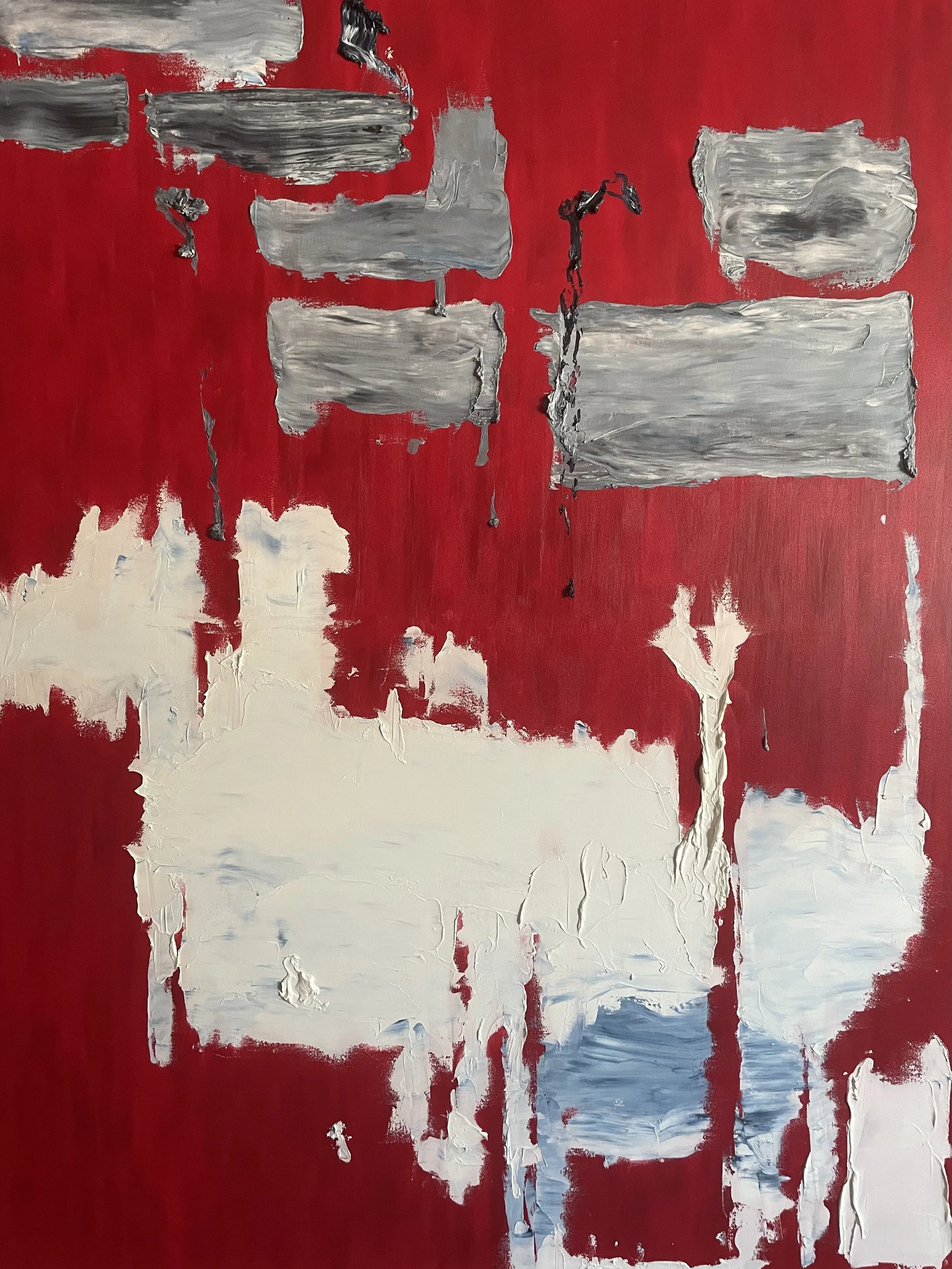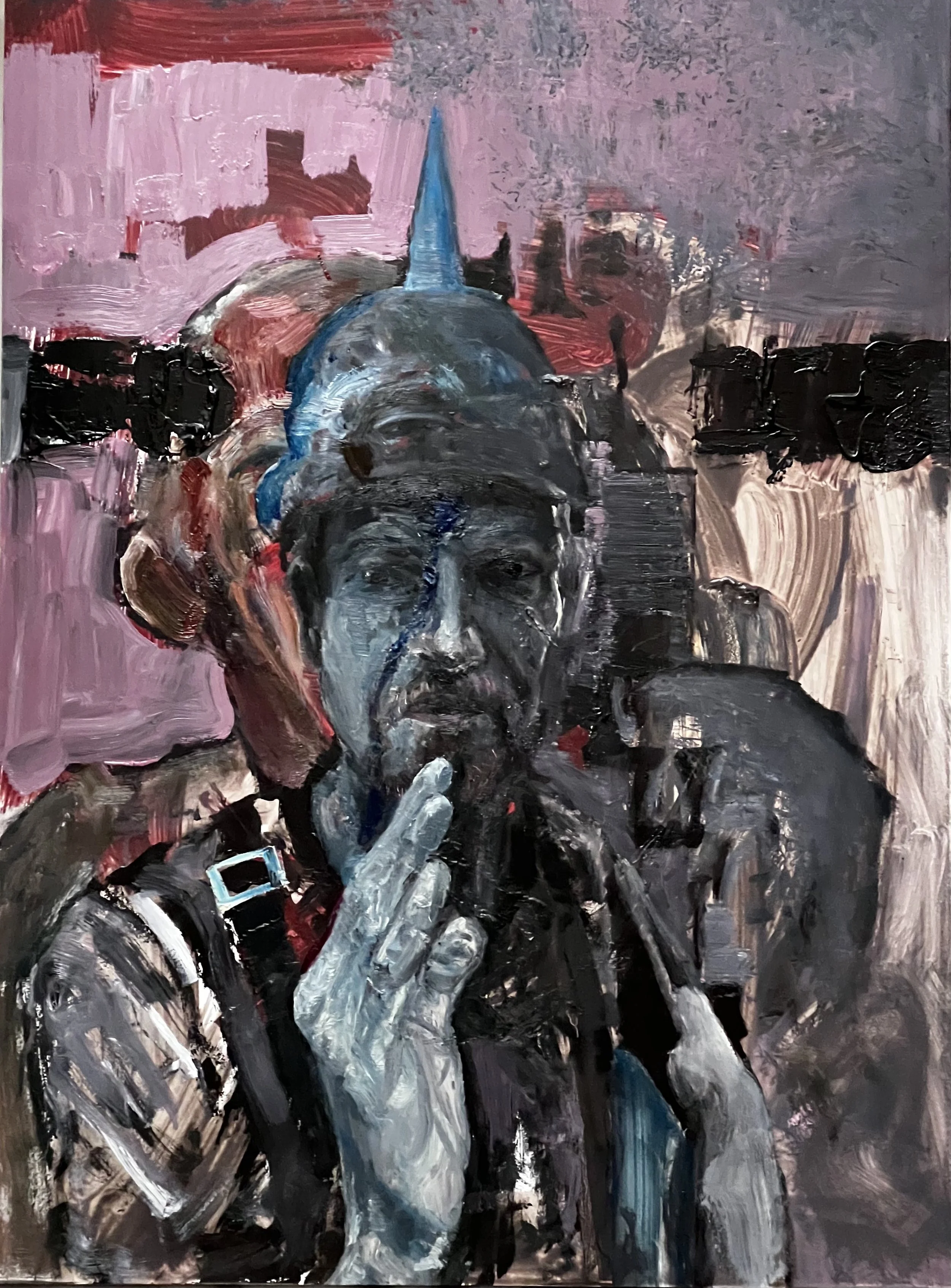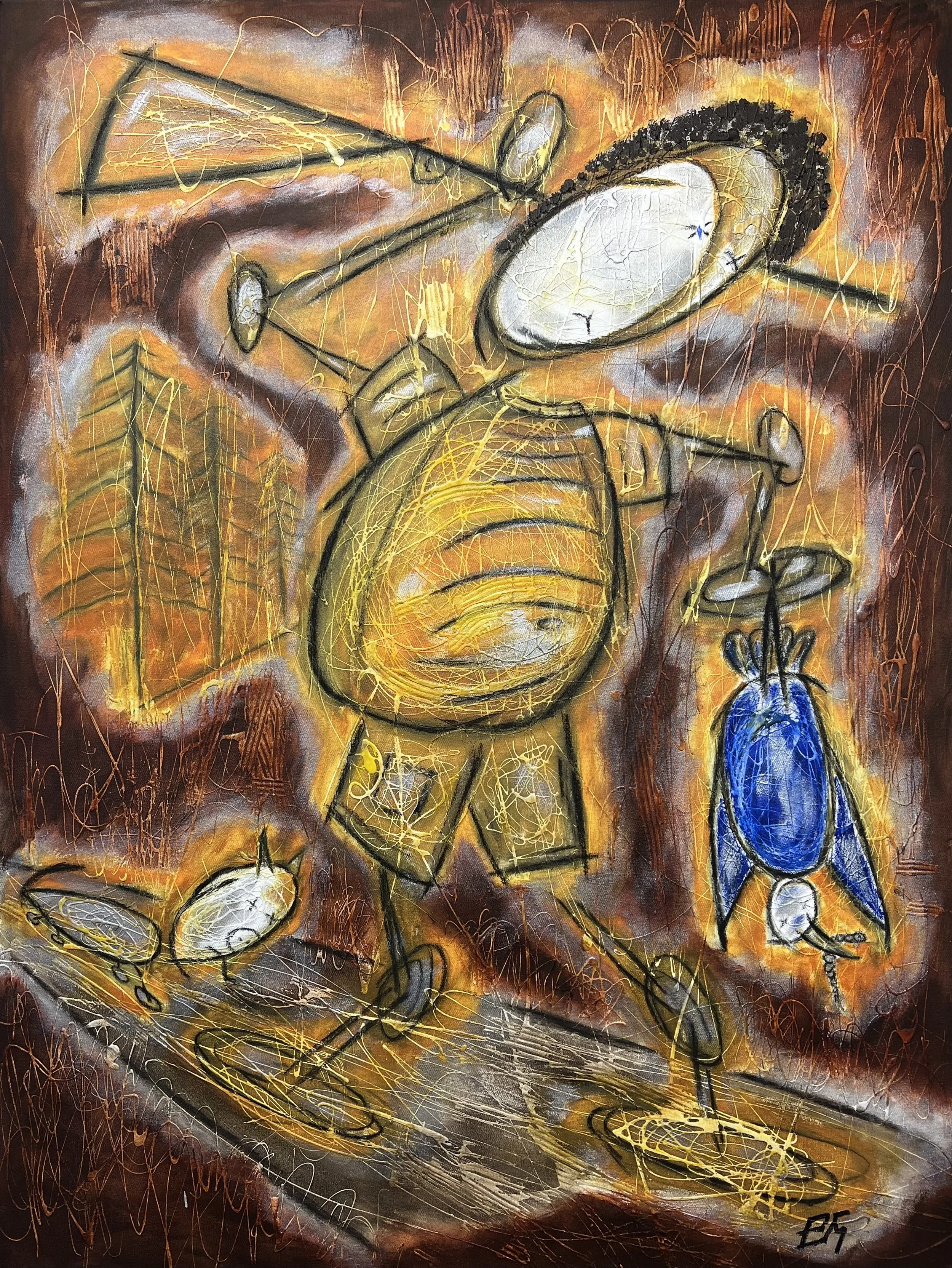Mark Tennant received a B.F.A. from the Maryland Institute College of Art, in Baltimore, and an M.F.A. from the New York Academy of Art, in New York City. For the years 2008 and 2009, he was the Director of Graduate Fine Art Painting at Academy of Art University, in San Francisco, where he had been an instructor since 1998.
All in Painting
Artist Spotlight - Secundino Hernández
Secundino Hernández's diverse and energetic painting practice resists easy characterisation. His work features intricately structured compositions that mix strong linear elements and rich bursts of colour. Some canvases feature abstracted, atomised forms, while others have more densely overlaid imagery in which it is possible to discern figurative elements.
Interview with Donna Andronicos
I love to explore different genres and techniques with my photography and my artworks, some of which are complimentary, and some that are not, but all of them, collectively, continue to meet my creative needs. Creativity for me is a multi-dimensional aspect of who I am. I can’t remember a time when I wasn’t mesmerised by light, colours and textures. As a photographer I often view the world in a series of images, whether that’s a potential great street shot, a beautiful landscape or wonderful blends of colours and textures.
Interview with Adriana Galetska
Art is a very concise illustration of the perception of reality, storytelling. For me, this is first and foremost about nourishment from color, as each color holds energy. Now, as it gets colder, it’s time to immerse myself in red. One of my artworks is called "Shy/Naked soul", because it is easier to expose the body than the soul. And art is about courage to be yourself. Art is both healing and a journey of self-discovery, and it’s also about continually, endless skill improvement. This is what the human soul longs for—constant growth. And now, at my 46, I feel that my appreciation for life grows with years, and therefore the feelings of happiness or joy of being.
Christophe Szpajdel
In the pantheon of contemporary art, where the interplay of tradition and modernity often creates fleeting moments of brilliance, Christophe Szpajdel stands as a profound figure who has redefined the aesthetics of logo design and calligraphy. His work transcends mere graphic utility, emerging as a unique confluence of fine art, cultural symbolism, and personal narrative. Known as "Lord of the Logos," Szpajdel’s oeuvre spans decades, mediums, and styles, making him an integral figure in both underground subcultures and the broader art world.
Nian Liu
Nian Liu’s artistry is a testament to the transformative power of ceramics, weaving together tradition and innovation in a manner that commands attention and admiration in the contemporary art world. Her practice, rooted in cultural heritage and cross-disciplinary techniques, is a bold declaration of ceramics as not only a craft but also a potent form of storytelling and social commentary. With an interdisciplinary ethos and a focus on footwear as an evocative medium, Nian’s creations emerge as visual and cultural symphonies, harmonizing the old and the new, the tangible and the conceptual.
Jia Min
Jia Min's art is more than a visual spectacle; it is a profound philosophical exploration. At its core, her work is a meditation on resilience and grace in modern femininity. Drawing from her diverse cultural experiences across China, Singapore, London, Chicago, and Copenhagen, she brings a nuanced understanding of the human soul and the complexities of femininity. Trained at the Florence Academy of Art, her works blend the rigor of classical techniques with a modern sensibility that reflects her life’s rich tapestry.
Asli Dogru
Asli Dogru’s artwork occupies a fascinating realm where the mythical intertwines with the surreal, the ancient collides with the modern, and the viewer is drawn into a profound narrative of timelessness and transformation. Her talent as an artist lies in her ability to blend diverse mediums, philosophies, and imaginative landscapes into visual experiences that are not only aesthetically captivating but also deeply reflective. A visionary in contemporary art, Dogru offers a body of work that is both groundbreaking and meaningful in its exploration of human experience, mythology, and the sublime.
Baiba Abelite
Baiba Ābelīte’s artistry unfolds as a profound dialogue between urbanity and the fragmented rhythms of our 21st-century existence. Her paintings transcend mere representation, carving a niche in the contemporary art landscape as embodiments of a hyper-urbanized, digitally mediated reality. These compositions, painted in her signature technique on industrial metal surfaces, reflect the intricate interplay between human progress, its aestheticization of decay, and the search for meaning within a posthuman framework. This essay celebrates Ābelīte’s unique vision and investigates the critical resonance of her work within the global art discourse.
Gary Wagner
Gary Wagner’s photography, an enduring homage to the sublime majesty of nature, stands as a masterful testimony to the art form of black-and-white landscape photography. In a modern age saturated with vivid, digitally-enhanced imagery, Wagner’s restrained and meticulous monochromatic palette is a bold declaration of artistic intent, demonstrating a rare discipline and reverence for form, tone, and composition. His photography, spanning over four decades, reflects an unrelenting commitment to capturing nature’s dynamism and subtle grandeur.
Chan Suk On
Chan Suk On’s artistic journey and her series Loose Pieces represent a critical shift in contemporary conceptual art. With a background in photographic design and fine arts, Chan Suk On has managed to traverse the domains of documentary photography and conceptual art, carving a unique niche in the global art scene. Her work, meticulously constructed from discarded film camera parts, embodies a complex interplay of nostalgia, reinvention, and the materiality of forgotten objects. This essay explores the reasons why Chan Suk On’s art deserves admiration, her position within the art world, and the deeper conceptual frameworks that underpin her practice.
Luana Stebule
Luana Stebule's contributions to contemporary art are profound and transformative. Her unique ability to distill complex human emotions and societal narratives into vibrant, abstract canvases makes her work not only a feast for the eyes but also a catalyst for introspection and dialogue. Each piece serves as a bridge, connecting diverse global audiences through shared human experiences and emotions, fostering a deeper understanding and empathy across cultural divides.
Zeb Lund
Zeb Lund’s artworks stand at the intersection of architectural precision, raw emotion, and the boundless explorations of the human condition. His artistic narrative combines profound philosophical inquiry with an unrestrained experimental approach, making his body of work an evocative contribution to the contemporary art scene. Drawing from his architectural training, Lund’s works reflect a fascination with space, time, and ruin, yet transcend technicalities to delve deeply into human experience, emotion, and existential observation.
Ashima Kumar
Ashima Kumar’s artistic oeuvre is a celebration of abstraction, symbolism, and the profound interconnectedness between nature and the human psyche. Her works transcend mere visual appeal, offering philosophical reflections and emotional depth that resonate deeply with contemporary audiences. Kumar’s ability to bridge traditional Asian influences with modern abstraction positions her as a significant figure in the global contemporary art scene. Each piece of her collection speaks to the viewer in whispers and echoes, inviting introspection and a reconnection with the organic world.
Marcel Jomphe
Marcel Jomphe's art emerges from the serene landscapes of Quebec, where he transforms the canvas into a profound dialogue between humanity and nature. Through his meticulous drawings and photographs, Jomphe masterfully captures the essence of the natural world, inviting viewers to transcend the ordinary and explore the intricate beauty and interconnectedness of the environment. His work, deeply rooted in a half-century of observing and interacting with natural forms, serves not only as an artistic expression but also as an urgent call to ecological mindfulness.
Giora Carmi
The artwork of Giora Carmi is not merely seen; it is felt. His use of color and form—erratic yet harmonious, chaotic yet serene—echoes the dichotomies of human experience. His brushwork, liberated from the constraints of figurative accuracy, invites a form of visual wandering that encourages the mind to drift between the lines, to find meaning in the abstract. This freedom is reflective of Carmi’s own life, a journey through various vocations and avocations—from a distinguished career as a graphic designer and illustrator in both Israel and the United States, including work for high-profile publications like The New York Times and The Wall Street Journal, to his impactful roles as an educator and art therapist.
Stefano Paradiso
Stefano Paradiso’s contributions to contemporary art are marked by a rare depth and a committed vision. His photographs are not merely images but are complex texts written in light and shadow, inviting interpretations that challenge our perceptions of the world. His work encourages a contemplative dialogue with nature, with history, and with the soul, making him a pivotal figure in the discourse of contemporary photography. His art resonates with a profound vitality, a resonance of the spirit that transcends the visual to touch upon the universal. Through his lens, we are invited to witness the poetry of the earth and perhaps, in doing so, find a reflection of our own place within it.
Tilmann Krumrey
Navigating the works of Tilmann Krumrey is like embarking on an odyssey through the profoundest strata of human existence, underpinned by a narrative that transcends mere visual delight to engage in a deeper dialogue with the essence of being. Krumrey’s artistic journey is distinct, marked by his lineage steeped in the Bauhaus tradition through his father, Immo Krumrey, and an early exposure to a milieu of significant artistic influences. From the post-expressionist echoes in the studio of Doris von Sengbusch-Eckardt to the avant-garde undercurrents he absorbed from Prof. Albert Fessler, Krumrey’s formative experiences frame a sophisticated tableau of historical and conceptual artistry.
Paul Scott Malone
Paul Scott Malone’s art transcends the boundaries of the visual arts, situating him as a monumental force in the contemporary art scene. With an artistic vision that is at once personal and universal, he has carved a niche that resonates deeply with both the modern audience and the historical undercurrents of art. His works, oscillating between abstract emotionality and narrative immediacy, mark him as one of the most exceptional and talented artists of our era. As an art critic writing in the style of Rosalind E. Krauss, it is essential to contextualize Malone’s art within the trajectory of modernism while also highlighting its urgent significance for today’s society.
Interview with ZaHaVa
For me, the act of creating art is a form of social justice. I believe in using my work to raise awareness and spark conversations about unity and inclusion. My art invites viewers to confront societal divisions and shift their perspectives.
I hope to inspire dialogue about identity, encouraging people to not only celebrate our differences, but also recognize our shared essence. My journey as an immigrant has reinforced my belief that unity doesn’t require uniformity. True unity is found in the acceptance and celebration of our unique paths and our collective humanity.



















